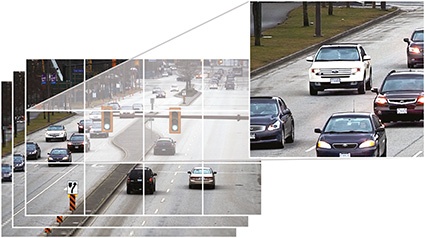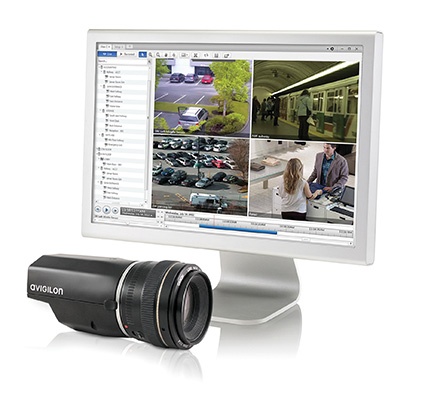High Definition Stream Management
The scenario repeats itself all too often: The hourglass or spinning icon when accessing live or recorded video, waiting for the system to catch up. Slow, choppy and blurry video a...


The scenario repeats itself all too often: The hourglass or spinning icon when accessing live or recorded video, waiting for the system to catch up. Slow, choppy and blurry video as it struggles to deliver required resolution and frame rate. These are the familiar symptoms of a video management system (VMS) unable to handle the demands of a growing high definition surveillance architecture.
While improved compression technologies like H.264 have provided bandwidth savings over predecessor standards, the overall performance of your VMS is not determined by compression alone. As you expand the count of high-resolution cameras within your system, the strain on network and other computing resources undoubtedly increases. To address the challenge of system scalability and bandwidth management, Avigilon has developed its High Definition Stream Management (HDSM) technology. HDSM is a proprietary stream management technology that drastically reduces server-client bandwidth requirements and makes optimal use of client computing resources, enabling greater scalability and increased camera resolution.
How It Works
While other VMS systems are dependent on leveraging video compression, multicasting and multistreaming for bandwidth management, the Avigilon Control Center software employs HDSM, a purpose-built bandwidth management technology, which reduces overall network load by an order of magnitude more than traditional technologies HDSM stores the video information on the server as small packets. Simultaneously, HDSM separates the video into multiple useable segments: lower resolution and smaller size streams for situational awareness, and much larger streams for full image detail. HDSM then intelligently manages these streams based on what the user is viewing. For example, if multiple cameras are being displayed in Avigilon Control Center with full field of view, the lower resolution stream is sent from the server to the client. When the user engages a camera and digitally zooms in for greater detail, the higher resolution stream is provided. However, only the portion from that region of interest is sent. This dramatically reduces the amount of information exchanged between the server and client, by only providing the information that the user needs at that time, regardless of resolution. High Definition Stream Management 2.0 Until now, HDSM was most effective with the JPEG2000 compression standard. This was primarily due to the dynamic adaptability of the JPEG2000 compression standard with highresolution imaging. While PEG2000 provides coding flexibility and high imaging performance, it also produces higher average bitrate streams and less overall compression than H.264, and is not a widely used standard within the video security surveillance industry. As a result, HDSM 2.0 was developed to operate with the H.264 compression standard, simultaneously providing users with high-resolution imaging performance, further bitrate reduction of H.264 and the intelligence and flexibility of HDSM. This technology pairing provides a unique and superior network performance over systems solely utilizing H.264 compression.
The Next Section Outlines How this Works:
In figure 1A, HDSM is illustrated with the white line grid over a 16 MP image. The image is divided into 12 distinct areas. When a user zooms in on an area for more detail, only that portion, (e.g. in this illustration 1/12th of the total resolution) is sent from the server to the client. Not only does this drastically reduce the bandwidth between server and client, it reduces the required decoding resources, which enables improved system performance, responsiveness and overall user experience. HDSM also uses progressively lower resolutions. For example, if you were to display the full field of view of a 16 MP camera on your 1080p (2 MP) monitor, you would receive an intermediate resolution since you only need 2 MP of data. And when a camera is being viewed within a multiple camera display (e.g. one of 9 cameras in a 3 x 3 grid), the lowest resolution is used. In
the end, HDSM provides only the resolution and detail you need when you need it. Conclusion For system integrators and end-users planning for their video surveillance system expansion, the Avigilon Control Center software with HDSM technology is a solution that will provide them both ncreased performance and flexibility. With HDSM 2.0, Avigilon has paired H.264 compression with intelligent bandwidth management technology to create an effective solution in enabling broad system scalability in both camera count and resolution.
most read

When the Internet stumbles: Why DNS is important
When DNS fails, the internet stumbles-AWS outage proves resilience and redundancy are vital for digital trust

Integrated and Futureproof: Traka’s Next Chapter
Interview with Stefni Oliver on Traka’s Vision for the Future


Security management, building security & perimeter protection: the winners of category E at the GIT SECURITY AWARD 2026
GIT SECURITY AWARD 2026: Security management, building security & perimeter protection - an overview of the most innovative solutions

GIT SECURITY AWARD 2026 - The winners have been announced!
GIT SECURITY AWARD 2026: The best safety and security solutions of the year - now an overview of all winners







